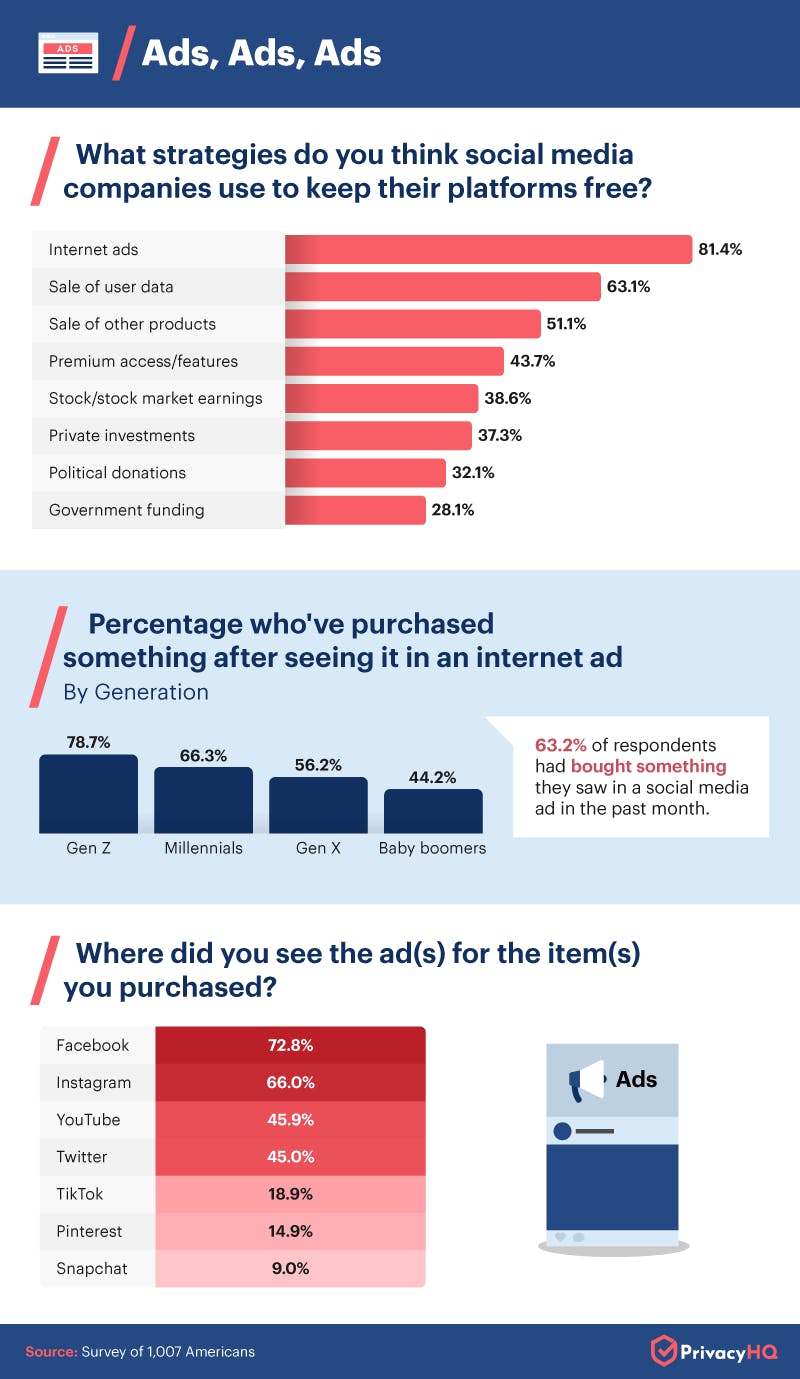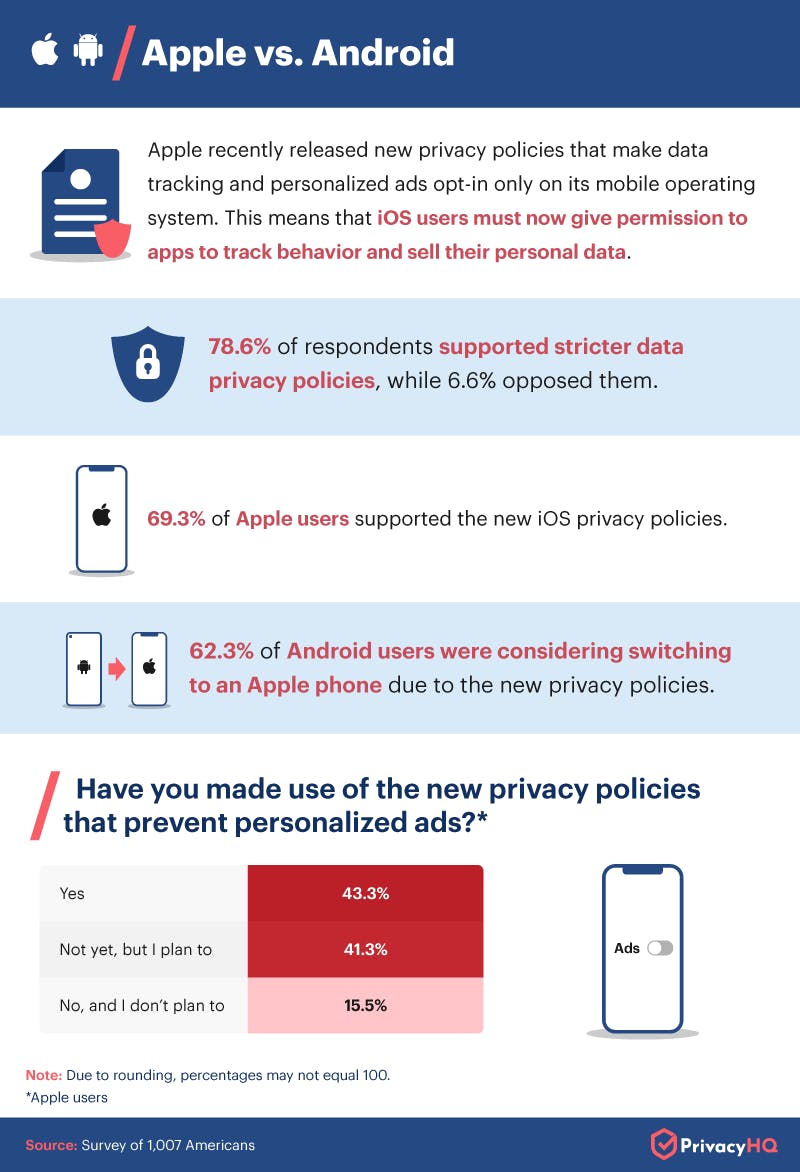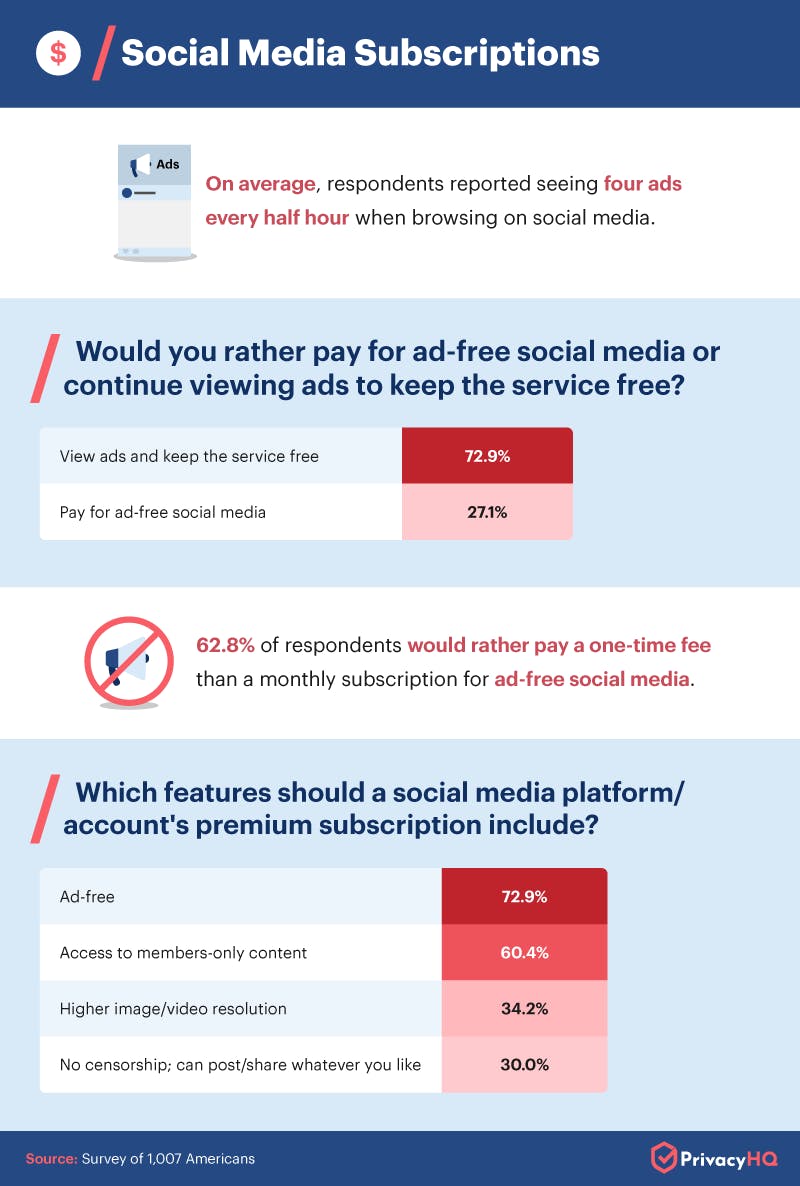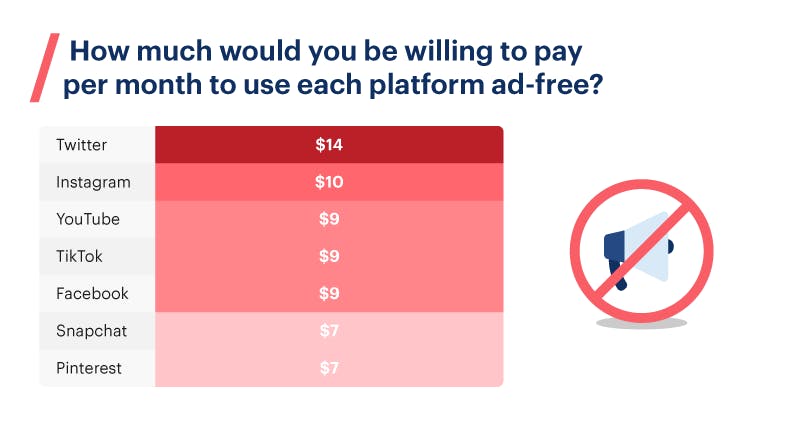What Funds Your Internet Fun
On Social Media, Freedom Isn’t Free
Most Americans’ personal information is anything but personal these days. They share it constantly in exchange for free access to social media and other online services who often sell it to third parties. Personal data is used in many ways for financial and political gain, and marketers use it to target advertising to specific people based on who is most likely to buy their products. This can be seen as a benefit to the consumer – wouldn’t you rather see ads for products you actually want?
But lately, many have become wary of how their data is being used, and corporations are taking notice of their concerns. How much do internet users actually know about online services such as social media, and what makes them free? What would they give to keep their data out of the hands of third parties? We surveyed 1,007 Americans and discovered some interesting truths about their perceptions of these services.
Key Takeaways
- 28.1% of Americans said they believe the government funds social media.
- Social media users claimed to see an average of four ads every half hour.
- Americans said they’d pay up to $14 per month for an ad-free Twitter.
- Over 62% of Android users had considered switching to Apple because of the brand’s new privacy policy updates, starting with iOS 14.5.
Who’s Paying, and Who’s Buying?
We asked how people think social media is being funded and how they respond to online advertising.

Considering the barrage of ads users encounter on social media, it’s no surprise that 81.4% thought that advertising is what keeps it free of charge. Those ads are often targeted using account holders’ personal information, which explains why 63.1% thought social media is funded by selling user data. They’re right – in fact, Instagram and Facebook use a whopping 86% of it. However, 28.1% believed that the government funds social media, and nearly half of these (42.6%) were Gen Zers. They’re right, too: in 2020, the government spent millions of dollars on social media ads. But people were more than twice as likely to believe social media’s funding comes from selling their data as opposed to government funds.
Internet ads can have a big impact on consumer spending. Overall, people spent an average of $139 in the past month on items seen in internet ads, but older generations were less easily tempted than younger ones. Of people who have purchased something they saw advertised online, 44.2% were baby boomers, 56.2% were Gen Xers, 66.3% were millennials, and 78.7% were Gen Zers. TikTok ads in particular worked well on younger people - 1 out of 5 Gen Zers had bought something in the past month after seeing it in a TikTok ad.
Apple’s New Privacy Policy
Apple is making changes to give users more control over their personal data. What is the impact so far?

In June 2021, Apple updated its privacy policy to require that apps ask users’ permission to track their behavior and sell their personal data. As a result, iOS users now have the option to choose whether apps can collect and use their data to personalize the ads they see. We found that this aligns with public opinion. Overall, 78.6% said they support stricter data privacy policies in general, while 69.3% of Apple users supported the brand’s new privacy policy.
This could pose a problem for Apple’s competitor, Android, which currently leads the mobile market. Of Android users surveyed, 89.4% said that they, too, would like the option to prevent apps from tracking their personal data, and more than 62% of Android users have considered switching to Apple because of their new privacy policy.
Free or Ad-Free Social Media?
We asked if people would prefer to keep social media free of charge or pay for an ad-free experience.

Althoughsocial media users claimed to see an average of four ads every 30 minutes, 72.9% of respondents said they’d prefer to keep seeing ads than have to pay for ad-free social media. Social media ads weren’t enough of an annoyance for many people to pay to get rid of them; however, the majority of those willing would prefer to pay a once-off fee than a monthly subscription. An ad-free experience was also the most popular feature for hypothetical premium subscription accounts.

If respondents were to pay for an ad-free experience, how much would they be willing to spend? Twitter users may be the most fed up with social media ads; people said they’d pay up to $14 per month for an ad-free Twitter. Meanwhile, they only wanted to pay half that to remove ads from Snapchat or Pinterest.
Blocking Ads
Who is taking steps to see fewer internet ads, and how are they doing so?

Until social media platforms decide to offer paid ad-free experiences, another way to cut down on internet ads is by using an ad blocker. Many of these are free to use, and they come in the form of a browser extension or mobile app which prevents ads from displaying while you browse. We found that the most popular option was AdBlock or AdBlock Plus, and the least popular was a tie between Stands Fair and Ghostery.
But who actually uses ad blockers? The likelihood of use decreased with age. Almost 36% of baby boomers used zero ad blockers, followed by 30.3% of Gen Xers, 22.5% of millennials, and 13.9% of Gen Zers. Those who did use them primarily did so on a desktop or laptop computer – 85% – compared to only 43.7% who used an ad blocker on their mobile device.
Data Security vs. Targeted Ads
While most people understand the role that advertising plays in keeping social media free to use, some value an ad-free experience enough to pay up to $14 a month to get it. Still, internet ads don’t seem to bother most of the users we surveyed. But by the time their personal data is being used by advertisers, it could also be in the hands of other less obvious – and possibly, more nefarious – third parties. If they understood this connection, perhaps they would be more likely to take steps to protect their information. If you want to learn more about data privacy and how to keep your information secure, check out the knowledge base at Privacy HQ.
Methodology
This study uses data from a survey of 1,007 people located in the U.S. Survey respondents were gathered through a bespoke online survey platform where they were presented with a series of questions, including attention-check and disqualification questions. 56.5% of respondents identified as men, while 43.5% identified as women. Respondents ranged in age from 18 to 81 with an average age of 37. 31.2% of respondents were millennials, 25.7% were Gen Xers, 20.5% were baby boomers, and 22.6% were Gen Zers. 63.9% of respondents were Android users, 34.7% owned Apple phones, while 1.4% used phones running on a different operating system. Participants incorrectly answering any attention-check question had their answers disqualified. This study has a 3% margin of error on a 95% confidence interval.
Please note that survey responses are self-reported and are subject to issues, such as exaggeration, recency bias, and telescoping.
Fair Use Statement
We share this study’s findings as freely as social media users share their personal data. But unlike them, we ask for credit! Feel free to use any of the information here for noncommercial purposes, but please link back to this page whenever you share it.
